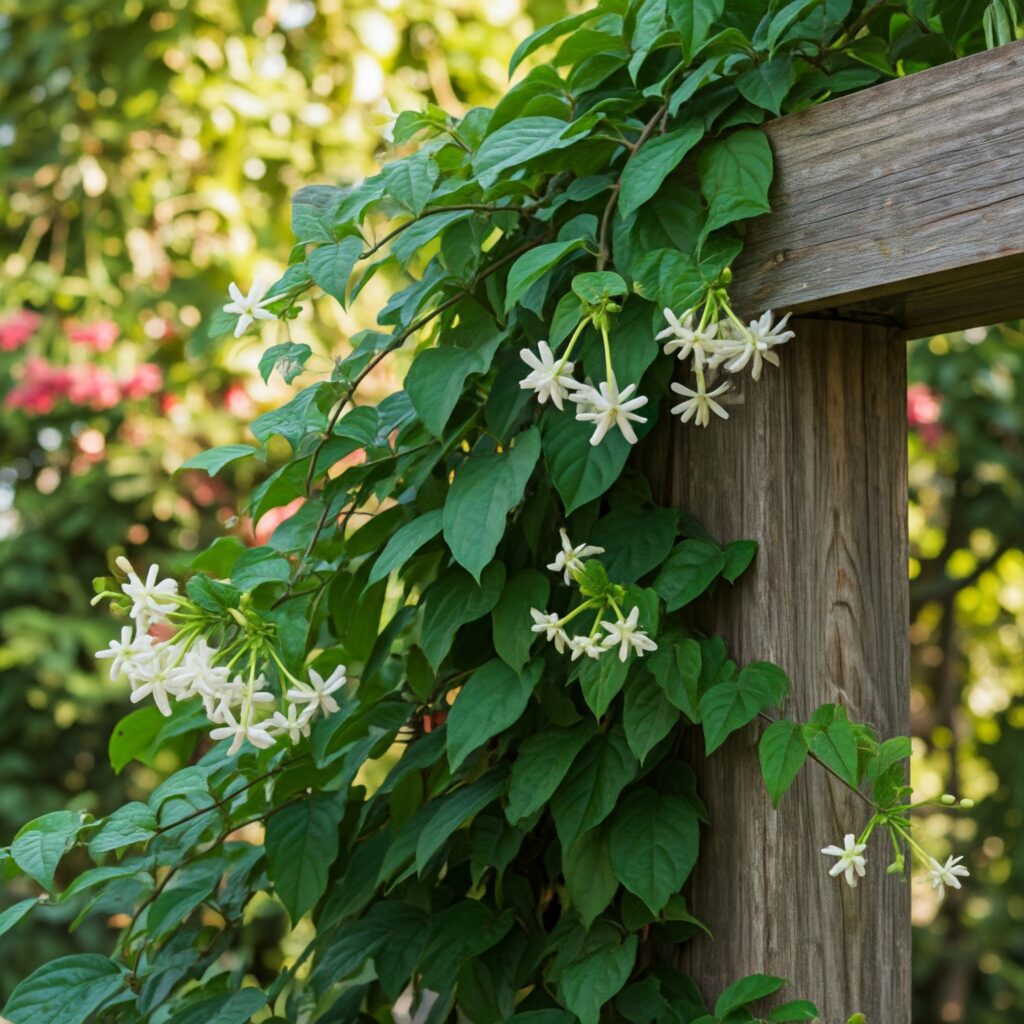
Hello there, fellow plant enthusiasts! If you’ve ever dreamed of adding a touch of exotic beauty to your garden, the Rangoon Creeper might be the perfect plant for you. This stunning climber is a feast for the eyes and a delightful addition for anyone looking to enhance their green space.
What is the Rangoon Creeper?
The Rangoon Creeper (Quisqualis indica) is a fast-growing, tropical vine known for its vibrant, fragrant flowers that change color as they mature. Starting as white, the blossoms transition to pink and finally to a deep red, often displaying all three colors simultaneously—a real visual treat!
Botanical Description
- Family: Combretaceae
- Type: Perennial climber
- Leaves: Oval to elliptical, glossy green
- Flowers: Trumpet-shaped, fragrant, and clustered
- Fruit: Ellipsoid with five wings
The plant can reach up to 30 feet long, making it ideal for covering arbors, trellises, or fences.
Origin and Distribution
Native to tropical Asia, particularly the Philippines, Malaysia, and India, the Rangoon Creeper thrives in warm, humid climates. It’s a popular ornamental plant in tropical and subtropical regions worldwide.
Growing and Caring for Rangoon Creeper
Planting
When planting the Rangoon Creeper, choose a spot that provides ample space for growth. It’s a vigorous climber, so support structures like trellises are essential.
Soil Requirements
- Type: Well-draining, loamy soil
- pH Level: Slightly acidic to neutral (pH 6.0 to 7.5)
- Tip: Incorporate organic matter to enhance soil fertility.
Light and Temperature
- Sunlight: Full sun to partial shade
- Temperature: Prefers temperatures between 70°F to 85°F (21°C to 29°C)
- Note: Protect from frost; not frost-tolerant.
Watering Needs
- Frequency: Moderate watering
- Method: Allow the top inch of soil to dry out between watering
- Advice: Overwatering can lead to root rot.
Fertilization
- Type: Balanced, slow-release fertilizer
- Schedule: Every 6-8 weeks during the growing season
- Organic Option: Compost or well-rotted manure works wonders!
Pruning and Maintenance
- When to Prune: Late winter or early spring
- How to Prune: Remove dead or overcrowded stems
- Benefit: Encourages healthier growth and more abundant flowering.

Product Availability
Where to Buy Rangoon Creeper
The Rangoon Creeper is increasingly available at:
- Local Nurseries: Check your nearby garden centers, especially those specializing in tropical or subtropical plants.
- Online Retailers: Many online plant shops offer Rangoon Creeper as live plants or seeds, shipped via priority mail.
Click Here To Buy it on Amazon
Shipping Considerations
- Regions: Shipping is typically available within USDA hardiness zones 8-11, where the plant thrives outdoors.
- Frost Susceptibility: Due to its sensitivity to frost, some sellers may restrict shipping during colder months or to colder regions.
- Overseas Shipping: International shipping may be limited due to government regulations on transporting living plants.
Special Notes for Specific Locations
- Hawaii and Puerto Rico: Given their subtropical climates, Rangoon Creeper is well-suited for these areas. However, check local regulations as some plants may be restricted to prevent invasive species issues.
- Indoor Growth: In cooler climates, consider growing Rangoon Creeper indoors in a container, allowing for easier relocation during cold weather.
Government Regulations
- Permits: Some regions require permits for importing live plants.
- Inspections: Plants may be subject to agricultural inspections to prevent the spread of pests and diseases.
Tip: Always purchase from reputable sellers who comply with all shipping and plant health regulations.
Benefits and Uses
Ornamental Uses
The Rangoon Creeper’s lush foliage and vibrant flowers make it a standout choice for:
- Garden Aesthetics: Adds color and fragrance
- Privacy Screens: Covers fences and walls
- Attracting Wildlife: Draws butterflies and hummingbirds
Medicinal Properties
Traditionally, parts of the plant have been used in herbal medicine for:
- Digestive Issues: Seeds and fruit as anti-helminthic agents
- Skin Conditions: Leaves applied topically for specific ailments
Disclaimer: Always consult a healthcare professional before using plants medicinally.
Common Pests and Diseases
- Aphids: Can be controlled with insecticidal soap
- Mealybugs: Remove manually or use neem oil
- Fungal Diseases: Ensure proper air circulation and avoid overwatering
Propagation Methods
From Seeds
- Process: Sow seeds in well-draining soil
- Germination Time: 2-3 weeks
- Tip: Soak seeds overnight to improve germination rates
From Cuttings
- Type: Semi-hardwood cuttings
- Method: Dip cut end in rooting hormone and plant in moist soil
- Success Rate: Higher compared to seed propagation
Frequently Asked Questions (FAQ)
Q1: Is the Rangoon Creeper suitable for container gardening?
A: Yes, but choose a large pot to accommodate its growth and ensure it has support to climb.
Q2: How often does the Rangoon Creeper bloom?
A: It typically blooms from spring to fall, with peak flowering in the summer months.
Q3: Can it tolerate cold temperatures?
A: The Rangoon Creeper is sensitive to frost and should be protected or moved indoors in cooler climates.
Q4: Is it toxic to pets?
A: There are no widespread reports of toxicity, but it’s best to keep pets from ingesting any plant material.
Q5: Where can I buy Rangoon Creeper plants?
A: They are available at local nurseries and online retailers that ship to USDA zones 8-11. Ensure the seller complies with government regulations on shipping living plants.
Conclusion
Bringing the Rangoon Creeper into your garden is like inviting a splash of the tropics right to your doorstep. With its captivating blooms and relatively easy care, it’s a fantastic choice for both novice gardeners and seasoned green thumbs alike.
Join the Conversation!
Have you grown the Rangoon Creeper before? Share your experiences or ask questions in the comments below. Let’s grow together!
Liked this article? Don’t forget to share it with fellow plant lovers. Explore our related content or subscribe to our newsletter for more gardening tips and tricks.


























